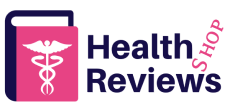Acne is a skin disease that is caused by the overproduction of sebum (oil) by the sebaceous glands. This oil is then released through the pores onto the skin surface. The bacteria present in the pores then multiply and cause infection.
Infected areas become red, swollen, painful and may become tender. There may be small whiteheads or blackheads which are actually the bacteria. In some cases, the acne may even turn into nodules, which are hard lumps of tissue that may become infected.
There are various types of acne. These include the follicular, papular, cystic and nodular types. Follicular acne occurs on the face and can spread to other parts of the body such as the neck, shoulders and upper back. Papular acne is usually located on the chest, back and upper arms. Cystic acne is characterized by a large number of pus filled bumps. Nodular acne is a type of cystic acne that often occurs on the face and may extend to other areas of the body.
Acne is generally treated with topical medication and/or oral antibiotics. Topical medications include benzoyl peroxide, salicylic acid and sulfur. Antibiotics used to treat acne include tetracycline, erythromycin, minocycline and doxycycline.
Acne is not a fungal infection. It is caused by a bacterium called Propionibacterium acnes. This bacterium is normally found in the human body. However, it tends to proliferate when there is an overgrowth of oil in the pores.
Doxycycline is an antibiotic that has been used to treat acne. Doxycycline is prescribed to patients who have severe acne or a history of repeated infections. Doxycycline is also used to treat rosacea. Rosacea is a chronic condition that affects the face, nose, ears, eyes and cheeks.
A recent study showed that the combination of oral antibiotics and topical steroids were more effective than either one alone. However, both oral and topical treatments are associated with side effects. Side effects of oral antibiotics include nausea, vomiting, diarrhea and abdominal cramps. Side effects of topical steroid include thinning of the skin, bruising, swelling, darkening of the skin and increased sensitivity to sunlight.
Washing your face with acne under jawline is not a good idea because you might end up damaging your skin. It is also not advisable to wash your face with acne under the breast area because the skin there is very sensitive.
It is not advisable to use a face wash that contains benzoyl peroxide, especially if you have sensitive skin. Benzoyl peroxide is known to irritate the skin.
You should avoid using acne face wash that contains alcohol or sodium laurel sulphate. Both these ingredients are known to dry out the skin.
You can use a moisturizer instead of a face wash to cleanse your face. Moisturizers contain emollients, which help to keep the skin hydrated. Emollients are also known to soften the skin and reduce irritation.
An ideal acne face wash should be non-comedogenic. This means that it will not clog the pores.
If you want to use an acne face wash, you should buy products that are specifically designed for acne. You should look for acne face wash with high levels of natural ingredients. These ingredients include aloe vera, green tea, grape seed extract, chamomile and witch hazel.

[…] you need to know about acne treatment including what causes acne, how to treat different types of acne, and ways to prevent future breakouts from […]